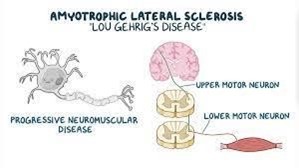A nurse is teaching a client who has a new diagnosis of diverticulitis. Which of the following instructions should the nurse include in the teaching?
"Follow a high-fiber diet until inflammation subsides."
"Use a soapsuds enema as needed."
"Avoid bending at the waist."
"Restrict fluid intake to 1.5 liters per day."
The Correct Answer is A
Choice A rationale:
A high-fiber diet is not recommended during acute inflammation, as it may be too abrasive for the inflamed bowel. Diverticulitis is a condition in which small pouches in the colon become inflamed and infected. A high-fiber diet can help prevent constipation and reduce pressure in the colon, which can aggravate diverticulitis.
Choice B rationale:
Soapsuds enemas are not typically used for diverticulitis. They can cause irritation and discomfort.
Choice C rationale:
Bending at the waist has no effect on diverticulitis and is not a relevant instruction.
Choice D rationale:
Fluid restriction can lead to dehydration and constipation, which can exacerbate diverticulitis. A client with diverticulitis should drink plenty of fluids to stay hydrated and soften the stool.
Nursing Test Bank
Naxlex Comprehensive Predictor Exams
Related Questions
Correct Answer is C
Explanation
Choice A rationale:
Wearing splints over affected joints while sleeping is a strategy to prevent contractures, which are common in ALS.
Choice B rationale:
Dexamethasone is not used to treat muscle atrophy in ALS.
Choice C rationale:
As ALS progresses, clients may lose the ability to control their respiratory muscles, and a machine such as a ventilator may be required to assist with breathing.
Choice D rationale:
Nutrition through a central venous access device is not a standard intervention for ALS, as the focus is on preserving the client's ability to eat and swallow for as long as possible.

Correct Answer is A
Explanation
Choice A rationale:
Inflammatory bowel disease, including Crohn's disease, can lead to decreased albumin levels due to malabsorption and inflammation.
Choice B rationale:
Increased erythrocyte sedimentation rate (ESR) is more likely in inflammatory conditions.
Choice C rationale:
Decreased hematocrit is more common due to potential blood loss.
Choice D rationale:
Decreased protein levels are expected due to inflammation and malabsorption.
Whether you are a student looking to ace your exams or a practicing nurse seeking to enhance your expertise , our nursing education contents will empower you with the confidence and competence to make a difference in the lives of patients and become a respected leader in the healthcare field.
Visit Naxlex, invest in your future and unlock endless possibilities with our unparalleled nursing education contents today
Report Wrong Answer on the Current Question
Do you disagree with the answer? If yes, what is your expected answer? Explain.
Kindly be descriptive with the issue you are facing.
